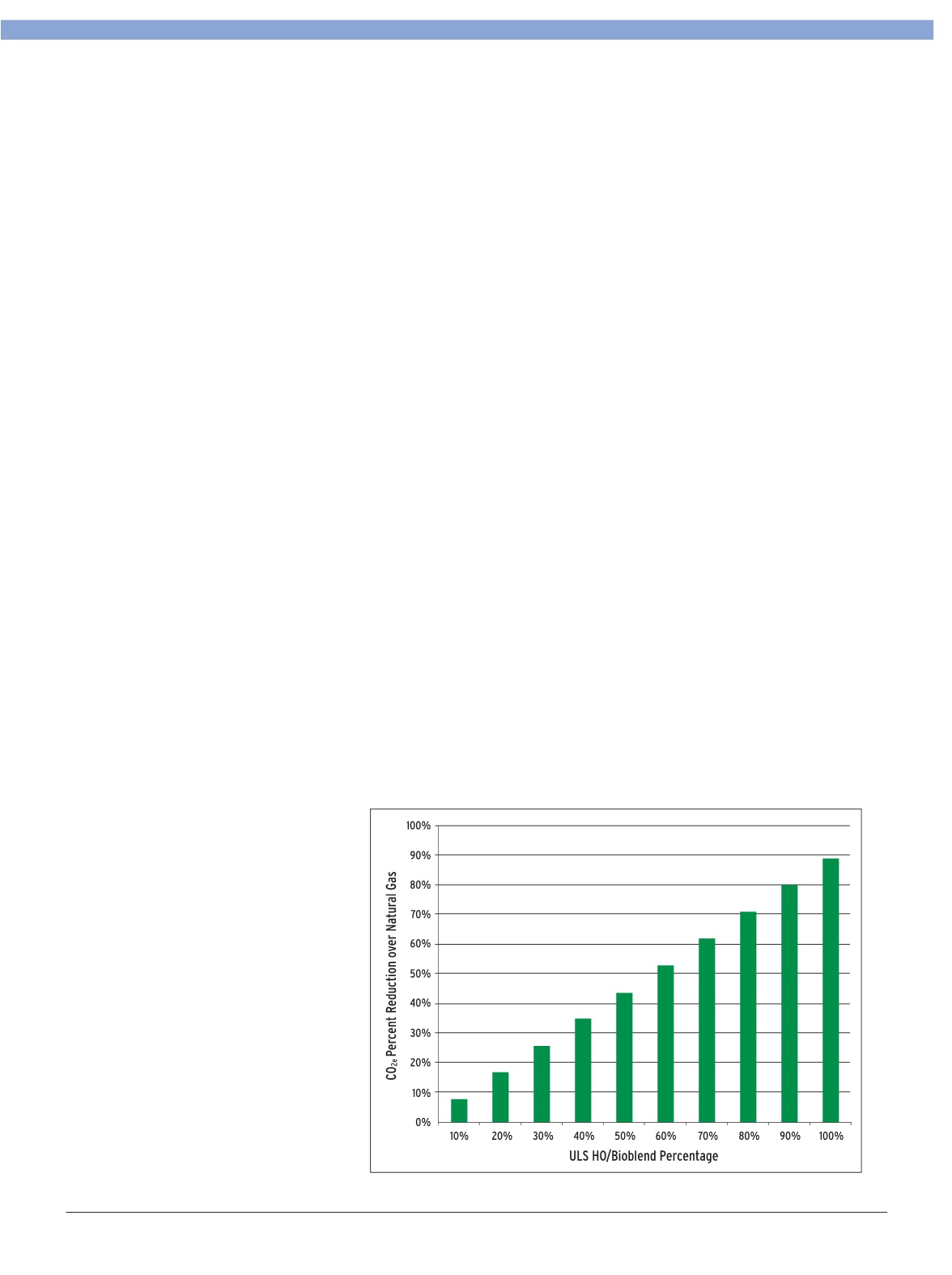
iLÀÕ>ÀÞÊÓä£{ÊU Óx
=8CC@E> ;@JK@CC8K< @DGFIKJ
While natural gas prices are positioned
to increase, heating oil prices are showing
signs of stabilizing, according to the Exergy
report. “New England markets require very
little diesel and heating oil supply from
non-Canadian sources. In fact, East Coast
imports of diesel fuel and heating oil into
the market have been falling since 2004,”
the report states.
Exergy cites EIA data showing that the
U.S. crude supply, including Canadian and
Mexican resources, has been rising rapidly
and is expected to increase at the recent pace
for several years. “The combination of rising
oil sands production in Canada, oil from
shale across North America, renewable fuels
and biofuels could result in self-sufficiency
for the region by 2020,” the report says.
Comparing oil and natural gas prices,
the report concludes that, “Long-term
oil and gas price forecasts have changed
dramatically over the years and are revised
every year as perceptions about the future
change. There are a growing number of
signposts from both the oil and natural gas
markets indicating that oil and gas prices
may actually begin to converge back on each
other over the next several years. Should the
price premium for oil fall relative to natural
gas, any fuel cost savings from switching to
natural gas will erode.”
North American natural gas prices,
meanwhile, have fallen to the lowest
levels in over a decade due to rising sup-
plies of low-cost shale gas. “In general,
the North American natural gas market is
now demand constrained; e.g., there isn’t
enough demand to absorb rising supplies.
As a result, natural gas prices have fallen
to low enough levels to replace coal in
power generation and prevent new coal and
nuclear plants from being built. At least 21
LNG export projects in the U.S. lower 48
and Canada have been proposed by 2020.
These total over 27 bcf/day of natural gas
demand, which is equivalent to 40 percent
of 2011 U.S. gas demand. Rising natural gas
demand from power generation and future
LNG exports could cause natural gas prices
to rise from the recent low levels.”
>I<<E?FLJ< >8J <D@JJ@FEJ
The report notes that the science
of greenhouse gas (GHG) emissions is
evolving rapidly, and the International
Panel on Climate Change (IPCC) has deter-
mined that methane, the primary ingredient
of natural gas, is 17 percent more potent as
a greenhouse gas over a 20-year timeframe
than was previously believed.
At the same time, a recent Harvard
University study concluded that regional
methane emissions due to fossil fuel extrac-
tion and processing could be several times
higher than was stated in the most compre-
hensive global methane inventory.
Combing the data, the report concludes
that a blend of ultra low sulfur heating oil
and biodiesel is equivalent to natural gas in
GHG emissions, even when the bioblend
ratio is as low as 1 percent to 1.6 percent.
“Increasing the biodiesel fraction over
time will dramatically reduce the GHG
emission well below natural gas. Keeping in
mind that natural gas suppliers are pursuing
various types of biogas, there is no current
technology on the horizon that is economi-
cally viable,” the report says.
“All the above is not to say that
natural gas is not a good fuel, but to create
public policies in place to coerce conversion
from heating oil (ULS HO/bioblends) may,
in fact, increase GHG emissions.”
E<N PFIB 8JJF:@8K@FEJ N<@>? @E
Like Massachusetts, New York State is
developing a plan to expand the natural gas
infrastructure. When the New York State
Public Services Commission requested
comments on its Gas Expansion Case, the
Oilheat associations in the state joined
forces and weighed in.
Working together, the Empire State
Petroleum Association, the New York
Oil Heating Association and the Oil Heat
Institute of Long Island filed four separate
reports, including an assessment of liquid
fuel emissions; an analysis of oil and natural
gas markets; a look at energy efficiency and
conservation opportunities for residential
Oilheat; and an economic impact study.
On economic impact, the report noted
that the industry provides at least:
U £Ó]äääÊ`ÀiVÌÊ>`Ê`ÀiVÌÊLÃÊÊ iÜÊ
York State, generating some $24 million
in state personal income taxes paid;
U -iÊfÈxÈÊÊÊÌÌ>Ê>Õ>ÊViÊ
on annual sales of about $11 billion;
U f£x£ÊÊÊÃ>iÃÊÌ>ÝiÃÊ>`ÊfxÊ
million in Petroleum business taxes.
The following are excerpts from the
reports filed in New York State.
JK8K<D<EKJ 89FLK E8KLI8C
>8J 8E; ?<8K@E> F@C
“The Public Service Commission’s Order
begins with the statement that natural gas is
a cleaner fuel than other fossil fuels used for
home heating. …Much of the difficulty with
most emissions data is that they reflect lim-
ited information from the burner tip. This
does not provide an accurate view of a fuel’s
emissions profile. …When all information
is considered, ultra low sulfur heating oil,
when combined with biodiesel, will have
competitive emissions that are comparable
to natural gas.
“In addition to the decrease in emis-
sions, the improvements to heating oil will
have a number of other desired benefits.
Maintenance costs to customers will be
reduced, heating system performance will
be improved, and ultra-efficient equipment
will be available for consumers. Also, the
use of biodiesel blends will increase the
state’s use of a domestically produced
renewable energy source.”
LCJ ?F&9`fYc\e[ :F
)\
I\[lZk`fe m\ijlj EXkliXc >Xj Æ )' P\Xi 8kdfjg_\i`Z C`]\k`d\ n`k_ @CL
:fek`el\[ ¿


